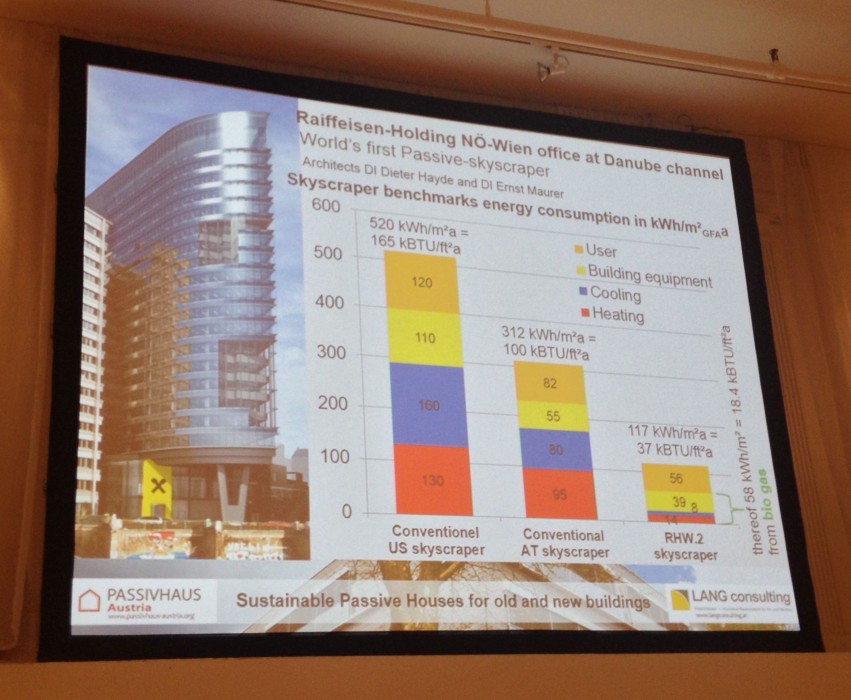Architype
Passivhaus across the pond – the New York conference
By Jonathan Hines

As Passivhaus emerges into the UK mainstream, it is interesting to observe it’s rapid growth around the world; nowhere more so than the New York where 375 people attended the 3rd annual Passivhaus conference on 17th June. To date, Passivhaus projects in New York have been largely residential, and I attended as one of a number of international speakers invited to share our experiences of larger, non-domestic projects, as this standard becomes more widely understood and developed. There was great interest in how the UK’s Passivhaus schools are achieving excellent internal comfort conditions, whilst significantly reducing energy consumption, and how Architype has been able to deliver within standard budgets by integrating Passivhaus from the outset and focusing on simple elegant design. The stark reality of climate change was brought home by Diane Urge-Vorsatz, a speaker from the Central European University, and one of the authors of the IPCC Fifth Assessment Report. Highlighting the importance of the energy efficiency of buildings in the global effort to combat climate change, she emphasised a message that emerged strong throughout the day; the unrivalled ability of Passivhaus to deliver the necessary radical reductions of energy consumption. Other international contributions included Brian Kavanagh of Kavanagh Tuite Architects, who presented their Passivhaus student accommodation for the University of Dublin, as well as Sabine Leribaux of Architects Associates who illustrated a variety of their large Passivhaus office projects in Brussels. Brussels is an interesting example of the impact of good legislation. With responsibility for its own Building Regulations Standards, the Brussels region has adopted Passivhaus as the regulatory standard from 2015. This has prompted a huge movement to train up the design and construction industry, with a plethora of major developments already being built to PH standards. Brussels is proof that when tough energy targets such as Passivhaus are enshrined in legislation, the industry can and will deliver radically improved standards without increasing costs of compromising on architectural quality. By contrast our own Government has undermined the UK’s ability to meet European energy reduction targets by focusing on carbon offsetting and watering down planned improvements in regulation in response to industry lobbying. The rapid growth of Passivhaus in the UK and the US remains largely due to the efforts of committed clients, architects and engineers. It was an encouraging afternoon to see presentations from the growing number of Passivhaus projects emerging in New York itself, however the final session of the day returned to Europe when Gunter Lang took the audience on a whirlwind tour of Passivhaus projects in Austria, including mass housing developments, public buildings, hotels, court buildings, offices and even a prison! Lang laid down a challenge to New York by presenting the world’s first Passivhaus skyscraper, in Vienna, which has a primary energy consumption of 117kWh/m2/year compared to a conventional US skyscraper consuming more than 500kWh/m2/year. He finished by pointing out that unlike other forms of energy, energy-efficiency ‘never runs out’, ‘it’s supply is 100% secure and it ‘does not get more expensive over time’. Simple truths. To find out more about Passivhaus you don’t need to wait until the next New York conference, as the 2014 UK Passivhaus Conference is being held on 16th October in Stevenage. www.ukpassivhausconference.org.uk
